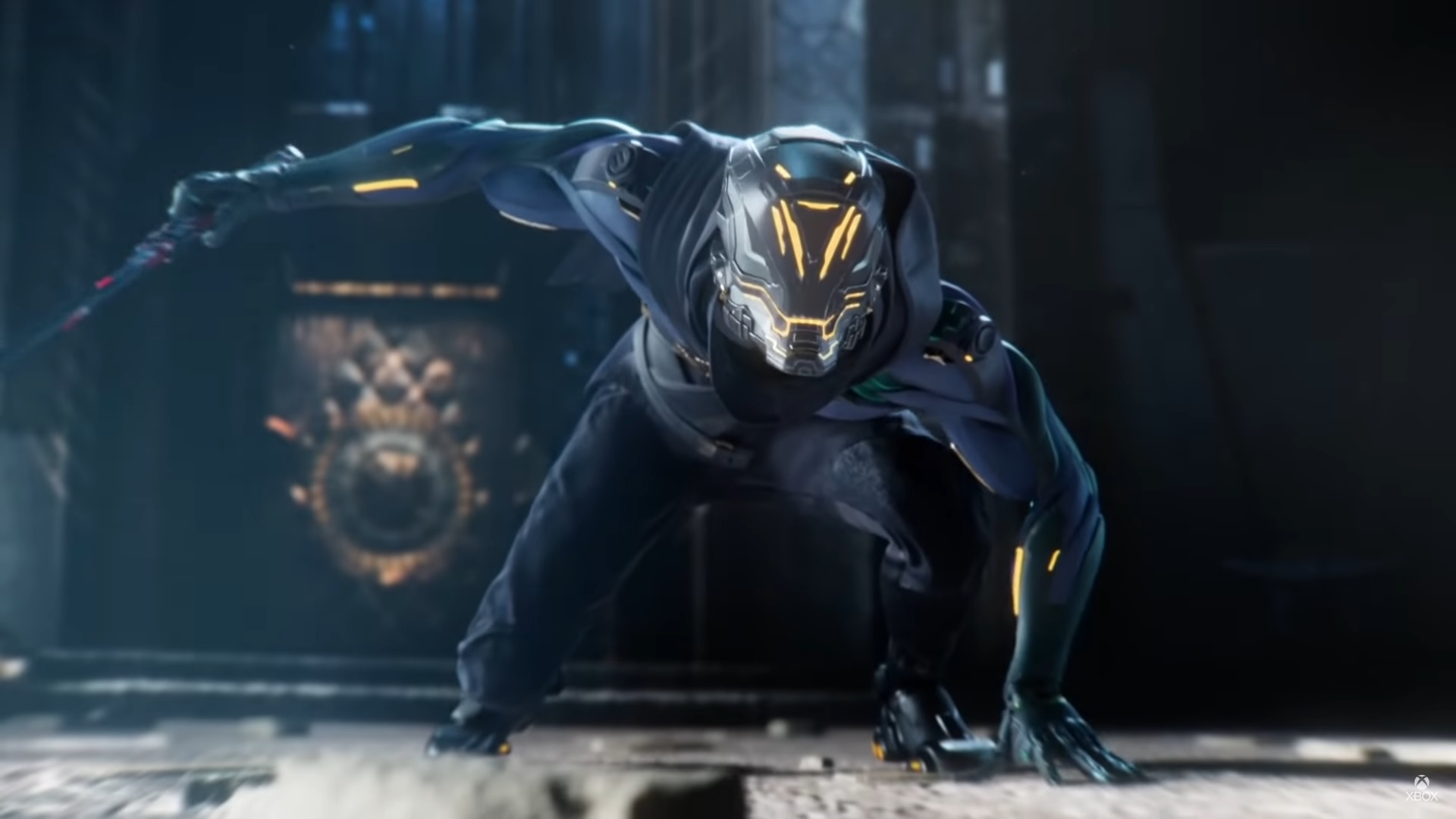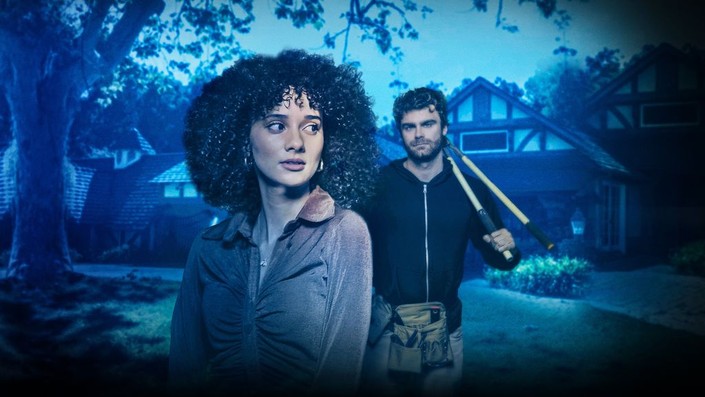Reviews
[Review] ‘Ghostrunner’ is a Brutal and Bloody Cyberpunk Challenge That’s Often Frustratingly Repetitive

The cyberpunk genre seems to be having a moment in video games right now. Watch Dogs: Legion just came out, telling the story of a collection of hackers fighting back against an authoritarian regime with a stranglehold on near-future London. Cyberpunk 2077, one of the year’s most anticipated games, looks to give players a huge set of options to tear through Night City however they want. But sneaking in among these two giants is Ghostrunner, offering a much more focused experience.
You are a Ghostrunner, the last hope of humanity, scooped up from near-death by the Architect to join the fight against the tyrannical Keymaster, who is making a play for Dharma Tower, the last bastion of humanity. It’s a desperate world that’s colored in slowly as you ascend the massive megastructure floor by floor.
This desperation is reflected in the gameplay. One hit kills, for both the player and the enemies, provide a significant challenge as you slice through the Keymaster’s guards with your katana. To meet this challenge, you have a wide variety of movement options. The ability to wall run, dash, and even grappling hook your way around the levels gives you an edge, but requires extreme precision to pull off. All these elements combine to make it feel like a combination of Titanfall 2, Mirror’s Edge, and Hotline Miami.
One of the biggest talking points about Ghostrunner is undoubtedly its difficulty. The game is lethal, and you will die over and over again. Enemies are extremely aggressive and can easily kill you if you’re not precise. Even the useful dodge ability that slows down time still requires great timing to be effective. To give you a picture of how much you’ll be dying, in the first level, my results screen said my playtime was six minutes, and I had died 18 times. This can provide some thrilling moments when you finally pull it off, but also leads to lots of repetition while trying to get it right.

While the game has very generous checkpoints, the save system can be pretty harsh. When you die, you’ll respawn almost instantly extremely close to where you died, but the game doesn’t actually save progress until you complete a level. This was a huge hindrance for me, because the challenge level of the game can make it very exhausting to play. Several times I got frustrated and wanted to walk away for a bit, but forced myself to finish the level so I wouldn’t have to redo the beginning. While some levels were short, others took me upwards of an hour to finish.
In addition to the enemy-infested sections, you have sections of pure platforming. These can be thrilling with all the movement options available, but they can feel very prescribed. The game does a great job of guiding the player with environmental elements, but there aren’t a lot of options available for you to choose how you want to progress. You simply find the path and follow it, if you’ve got the dexterity to pull it off. Occasional puzzles break it up as you hack your way through the systems of Dharma Tower, but these can either be too obvious or not quite signaled enough.
Ghostrunner manages to be a great example of what it’s trying to accomplish, but I personally don’t know if that type of game is for me. It’s beautifully polished and runs like a dream, with smart decisions to keep the scope focused to finely tune the experience they’re creating, but it frustrates me constantly.

I’ve been trying to figure out why I liked the challenge of something like Bloodborne, but wasn’t as excited by the one presented by Ghostrunner. In Bloodborne, when I finished a difficult encounter, I felt a rush of exhilaration. With Ghostrunner, there was some of that, but mostly it was a feeling of relief that I could move on. Part of this may have been from the way the save system worked, but I think a lot of it had to do with the lack of expressivity provided to the player.
In creating such a singular experience, they don’t provide a lot of options. There are some upgrades that can be unlocked throughout, but you’re still pretty much playing the way the developers want you to. With most combat encounters, there technically can be multiple ways to tackle it, but there’s generally a designed path that you run through to kill them all. Wall run, sword slash, grapple, grapple, dash, slash, all along a well-marked path. This makes the challenge of it not necessarily solving the how, but rather just mastering the timing of it all.
The moments you play out can be exciting, but it can be a bit like a rollercoaster that will stop and restart if you don’t press the right button at the right time. When you complete an encounter or platforming section on the first try, it’s a thrilling moment, but it loses its luster upon excessive retries. If you like lethal combat and precision platforming, you’ll find a lot to love in Ghostrunner, but those who like to find their own way will likely find it frustrating.

Ghostrunner code provided by the publisher.
Ghostrunner is out now on PS4, Xbox One, and PC, and will be coming to Nintendo Switch, Xbox Series X, and PS5 from next week.

Movies
Lifetime’s ‘Fatal Fixer Upper’ Needs a Few Plot Repairs [Review]

Writer Adam Rockoff reteams with director David DeCoteau on a new Lifetime thriller that bears a striking resemblance to this month’s earlier title, Million Dollar Lethal Listing.
In Fatal Fixer Upper, Vivian (Jasmine Aivaliotis) and Ryan (Philip McElroy) are a young married couple preparing to purchase their dream home. Just like in Million Dollar Lethal Listing, the deal is too good to be true: the house is wildly underpriced, the owner is looking for a quick sale, and they’re asked to make a hefty cash deposit.
Unlike the former title, though, there’s no mystery about who the villain is in Fatal Fixer Upper. The film opens with a classic Lifetime cold open that immediately establishes that there is a bad man keeping an eye on things. His identity is quickly revealed as Josh Thomas (Duke Van Patten), the home’s original owner and the person spying on Vivian when she checks out the property with her father, Roger Fields (an underused Dorian Gregory).
Alas there’s no room for subtlety in Van Patten’s performance as he immediately goes from spying on Vivian to snapping at realtor Sandy (Eliza Roberts) and neighbour Jill (Grisselle Escotto). Considering how easily he flies off the handle, it’s a surprise that Josh stays calm long enough to ingratiate himself into Vivian and Ryan’s lives by doing repairs around the house.

Because Josh is revealed as the villain early on, Fatal Fixer Upper is an exercise in patience. The audience is always one to two steps ahead of Vivian and Ryan, which requires the screenplay, co-written with Jeffrey Schenck and Peter Sullivan, to find entertaining ways to fill the time until the characters catch up in the last act.
Unfortunately the film relies too heavily on clichéd characters and formulaic developments. Naturally there’s a concerned therapist, Dr. Shaw (Diane Robin), who questions if Josh is taking his meds. There’s also Ryan’s cousin, Casey (Randy Jay Burrell), a police officer-turned-PI who investigates Josh after the homeowner explodes at a BBQ in front of everyone. And you know that Sandy’s in danger the moment she confirms to Vivian that Josh lied about where he’s living (sidebar: the film treats this as a reveal, but anyone who has ever seen a horror film will immediately call it).
The fact that danger and injury befalls anyone who questions or gets in Josh’s way is inevitable, though the way DeCoteau shoots action leaves something to be desired. Characters tend to die easily in Lifetime films, and Fatal Fixer Upper is no different: one person is briefly strangled before they’re dragged off screen and another is struck in the back of the head. Considering a third act hit and run looks far worse, but the victim barely uses crutches a day later, the impact of violence in the film feels wildly inconsistent.

Another Lifetime trait is the presence of ineffectual police officers. Here the role is played by Detective Jones (Rachel Wong) who does believes the couple about Josh’s increasingly unhinged behaviour, but doesn’t assign a police guard outside their home until after dark (perhaps she believes Josh is a vampire?).
While Fatal Fixer Upper rarely surprises, there are a few notable moments of inspiration. Like Million Dollar Lethal Listing before it, this Lifetime film’s secret strength is interrogating the integrity of the central couple’s marriage. As the film progresses, it’s revealed that Vivian and Ryan aren’t as solid as they initially appeared to be, and their doubts about the other help to sustain the film until its violent climax.
In terms of performances, Aivaliotis is a sympathetic lead with a decent amount of agency. It’s nice that she refuses to take crap from Ryan when he questions her about Josh’s continued presence around the house. McElroy is likewise solid as the suspicious husband, though Ryan makes some questionable decisions in the finale that seem more motivated by plot than by character.
That leaves Van Patten, who has arguably the trickiest role. He’s best when Josh is awkwardly trying to flirt with Vivian, even going so far as to initiate a rom-com moment when he’s sprayed by water and has to change shirts in front of her. Unfortunately when Josh loses his cool, Van Patten always plays him at a 10, so there’s no range or escalation. The performance needed to be dialed back to give it levels.
Fatal Fixer Upper‘s other fatal quality is that there are simply too many characters. Jill and her husband exist solely to offer vague exposition at convenient moments, but because they’re new parents, they’re equipped with plot armour.
Then there’s Josh’s ex-wife, Michelle (Savoy Bailey), who only returns after the cold open to diagnose Josh with a ridiculously laughable (and highly fabricated) disease that “explains” his behaviour. Fatal Fixer Upper has its share of deaths, but there are a few too many red shirts wandering around by the time the credits roll whose deaths might have helped to make the film more memorable.
Overall, this is pretty standard Lifetime fare. Fans of DeCoteau and Rockoff’s previous collaborations will undoubtedly appreciate it, but for the uninitiated, Fatal Fixer Upper is solidly mid-tier.
Fatal Fixer Upper premieres on Lifetime Thursday, April 25 at 8/7c.














You must be logged in to post a comment.